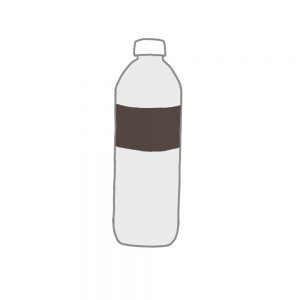Pesticides. GMOS. Natural ingredients. These are all controversial subjects regarding everyday foods, but with awareness unevenly focused on issues in the food industry, the dangers of drinking water are bubbling to the surface.
Chromium-6 is a carcinogen found to affect 218 million Americans in a study released last year by the Environmental Protection Agency. One of the states hit the hardest: California. It has plagued California’s tap water since the 1950’s, when PG&E accidentally dumped hundreds of gallons of chromium tainted water into the water supply of Hinkley, Calif. The sheer number of people affected forces awareness to an often overlooked concern, tap water’s purity.
Junior David Truong is very self aware of the water he drinks. He tries his best to avoid drinking tap water due to contaminants commonly found in it, though at times, it is unavoidable.
Of the many reasons Truong does not drink tap water, one of the biggest is the lack of effective laws ensuring it is safe.
Currently, the only state to regulate the levels of chromium-6 in tap water is California, which has a legal limit of 10 parts per billion, which according to the California Office of Environmental Health Hazard Assessment, is a restriction not nearly safe enough. That number is enormously larger than what scientists found to be the highest healthy concentration: 0.02 ppb. To put that in perspective, the law allows 500 times more chromium-6 than what professionals consider safe, despite the evidence that these high levels can seriously harm people and even cause cancer, after health officials proved this using rodents.
Truong is disturbed by the absence of practical management of chromium-6 in California’s tap water, something he expects from the government.
“The problem is, you can’t really control the dosage of [chemicals in tap water],” Truong said. “If you drink a lot of tap water, you’ll still get a lot of things that aren’t good for you.”
Junior Sina Faridnia drinks from the tap often, and sees nothing wrong with doing so, though he filters the water with himself. He tries to avoid unfiltered tap water as much as he can, but he understands it is not always possible.
Faridniaís reasons for drinking tap water are simple: it’s virtually free. For many people, cost is the only factor they consider, since not everyone cares enough to pay for costly environmentally friendly water. Because of this Truong believes that more should be done to keep tap water safe without having to compromise its accessibility to the public.
Faridnia was unaware of the dangers of drinking tap water. He finds it unsettling that there is not more regulation of chromium-6. Knowing drinking tap is not as safe as he had previously thought, Faridnia plans to avoid drinking straight from the tap, but he still prefers filtering water over buying bottled water.
Contrary to common belief, tap water and bottled water go through a very similar filtering process, even though they can look different at times.
According to the Santa Clara Valley Water Districtís website, tap and bottled water is filtered with thick layers of sand and coal, up to 18 inches in depth, to remove microscopic particles. The only difference between tap water and bottled is the final step, secondary disenfection. This final cleaning process involves the use of chlorine to purify the water from lingering bacteria or viruses. However, it is these chemicals used to cleanse water that deters Truong from drinking tap water in the first place.
“Certain things should be removed from tap water in general, like fluoride,” Truong said. “It’s basically a form of mass medication without the consent of the people.”
Fluoride is one of the mo st common chemicals found in tap water, and a highly controversial one, as an excess of this chemical can cause health problems, such as dental fluorosis. Fluoride, despite its use in dental care, can actually be worse for your teeth, since too much can cause tooth decay.
st common chemicals found in tap water, and a highly controversial one, as an excess of this chemical can cause health problems, such as dental fluorosis. Fluoride, despite its use in dental care, can actually be worse for your teeth, since too much can cause tooth decay.
Kyle Jones, a biology teacher, says he is astounded that there is not more done to prevent the spread of harmful toxins to Americans, such as chromium-6 and other general contaminants.
To avoid the potential dangers that come with drinking tap water, Jones filters his water before drinking it as an alternative to bottled water, though like many Americans, he lives in the city and does not have much of a choice. After hearing about chromium-6 and its subsequent backlash, he is more hesitant to drink tap water.
While this outbreak has spurred an anger toward the Environmental Protection Agency, Jones wants to reassure people who now distrust the system it’s intended to keep them safe.
“If it’s done right, there’s no reason not to trust tap water,” Jones said. “If this is something that can be fixed … I’d go back to trusting it. But for now I want to keep filtering [my water].”









